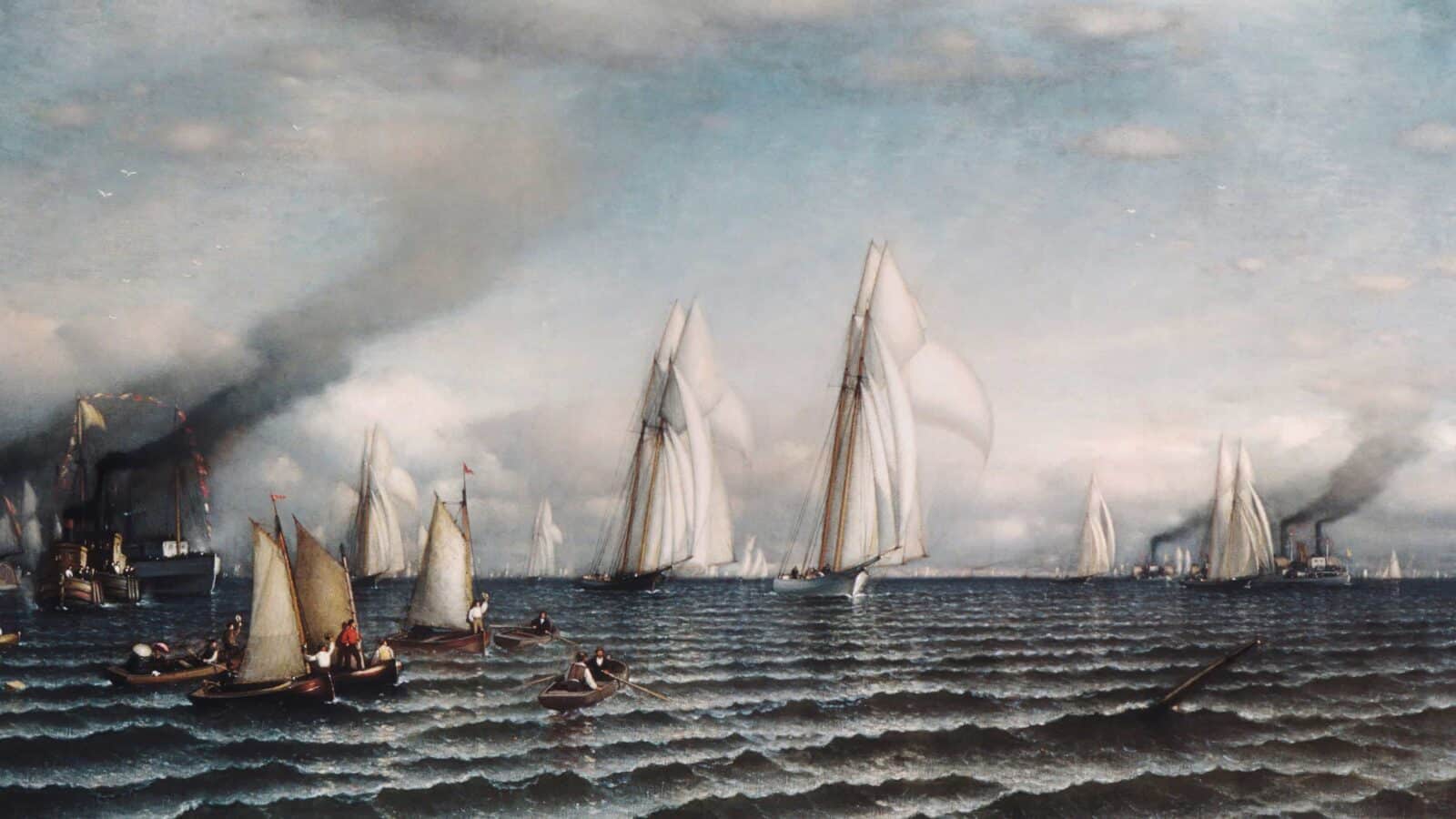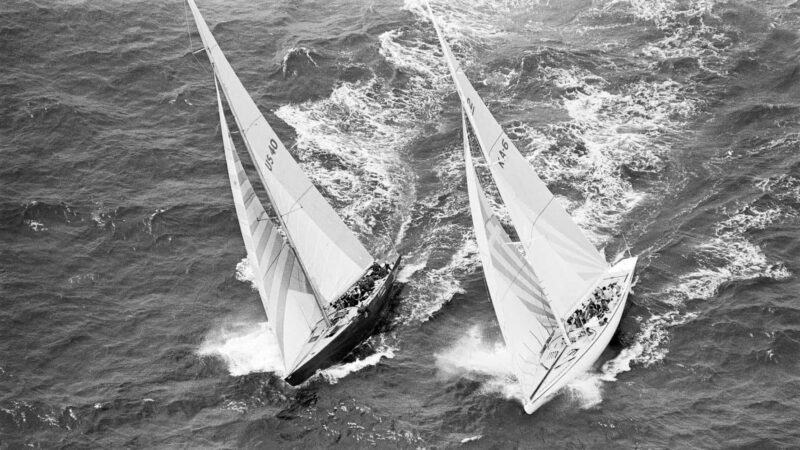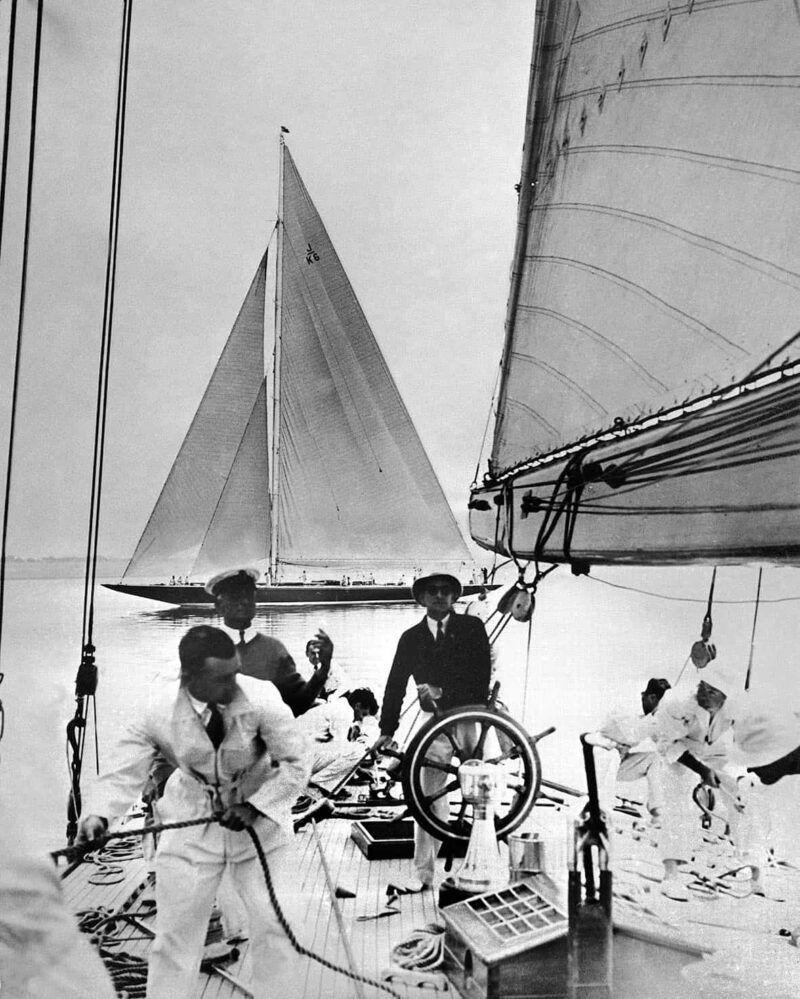What is the America’s Cup?
Running since 1851, this nautical contest is the oldest continuous international sport competition in existence

Samuel Colman’s oil on canvas Finish: First International Race for America’s Cup, August 8, 1870 depicts the second edition of the sailing competition
Getty Images
The high sea has always attracted swashbuckling adventurers and, since the founding of the America’s Cup in 1851, larger-than-life characters – two Vanderbilts, J Pierpont Morgan, tea baron Sir Thomas Lipton, media mogul Ted Turner and tech founder Larry Ellison among them – have taken time off from their empire-building to focus on nautical passions and yacht club honour.
First staged by Britain’s Royal Yacht Squadron, the inaugural race took place around the Isle of Wight under the watchful eye of Queen Victoria. When the royal yacht was passed by a radical-looking schooner for the lead, the monarch asked one of her attendants who was in second. “Your Majesty,” came the reply, “there is no second.”
It was an upstart syndicate of businessmen from the New York Yacht Club who sailed away with the silverware and a £100 cash prize. This represented the end of an era; the New World triumphing over the Old, and Britannia – for centuries the undisputed maritime superpower – unseated by the US.

American Liberty, left, vs Australia’s Australia II, America’s Cup, ’83
Getty Images
Their boat was called America, and the name stuck. Known affectionately as ‘the Auld Mug’, the America’s Cup is the world’s oldest international sporting trophy – older than the modern Olympic Games – and, due to something called the Deed of Gift, the trophy is in perpetual competition between nations. All it takes is a team to challenge the cup holder and then the anchors come up. New York didn’t have to relinquish the sterling silver ewer for 132 years, they were that good. That’s the longest running streak in the history of competition.
Before hydrofoils were introduced to the sport in 2013, the boats were huge and handsome, inspiring the curves of high-end cars. This is particularly true of the J Class yachts of that most stylish of decades, the 1930s. Sadly the war effort demanded all but three of those legendary vessels be scrapped.
Until 1970, it was only ever two teams – the defender and the challenger. Then it was opened up to multiple nations, and since 1983 there’s been a challenger selection series, the Louis Vuitton Cup, to identify the strongest pretender to the throne and ensure they’re sufficiently battle-tested to take on the America’s Cup’s reigning champion. Nineteen eighty-three was the year that, finally, the NYYC was beaten – by Australia’s Royal Perth Yacht Club. Australia II moved the technology of sailing forward in the same way Concorde had shifted aviation’s goalposts. The winged keel was so radical that the crew draped large ‘modesty skirts’ from the deck to the ground to keep their secrets under wraps. There was nothing modest about their mascot, though; a boxing kangaroo.

Sir Thomas Sopwith on Endeavour II was given a sound beating by the Americans in 1937
Since then, the United States has won five times, the Swiss twice, and the Royal New Zealand Yacht Squadron four times. The Kiwis are the reigning champions, having defeated the Italian Luna Rossa team in Auckland in 2021. A test of seamanship, engineering, fundraising and management in equal measure, it has attracted the world’s top sailors, designers and some of its most famous entrepreneurs, seduced by the prestige as much as the challenge.
The British, who have challenged New Zealand to contest the 37th America’s Cup are still yet to win. INEOS Team UK will face American Magic, Italy’s Luna Rossa Prada Pirelli, Switzerland’s Alinghi Red Bull Racing and France’s Orient Express in the qualifying matches and the winner will take on Emirates Team New Zealand mano-a-mano from October 12.
